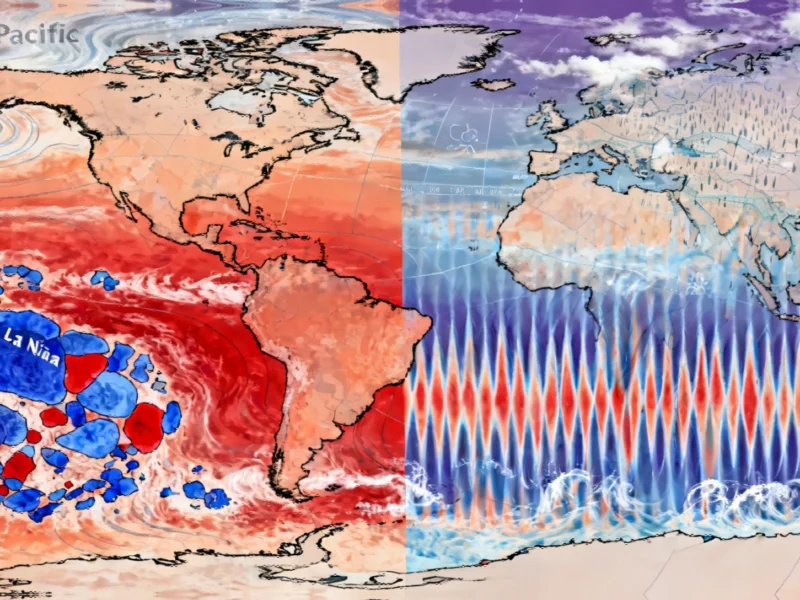Climate Tipping Point Approaching for Pacific Weather Patterns
According to reports in Nature Communications, the El Niño-Southern Oscillation (ENSO) system is projected to undergo fundamental changes due to greenhouse warming. A multinational research team using advanced climate models suggests these transformations could occur within the next 30-40 years, fundamentally altering global weather patterns.
From Irregular to Regular Oscillations
The study indicates that the tropical Pacific may reach a climate tipping point, switching from stable to unstable oscillatory behavior. Analysts suggest this represents the first time such a transition has been clearly identified in complex climate modeling. “In a warmer world, the tropical Pacific can undergo a type of climate tipping point, switching from stable to unstable oscillatory behavior,” reports Prof. Malte F. Stuecker, lead author of the study.
Sources indicate that enhanced air-sea coupling combined with more variable tropical weather will lead to significant changes in both amplitude and regularity of the El Niño–Southern Oscillation cycles. The research utilized the Alfred Wegener Institute Climate Model with unprecedented resolution to simulate these changes under high-emission scenarios.
Global Synchronization of Climate Phenomena
The report states that the intensified ENSO cycles are expected to synchronize with other major climate patterns, including the North Atlantic Oscillation and Indian Ocean Dipole. This synchronization mechanism has been compared to multiple weakly connected pendulums adjusting to swing at the same frequency.
According to the analysis, this global synchronization will have far-reaching consequences for regional climate classifications and weather patterns. “This synchronization will lead to stronger rainfall fluctuations in regions such as Southern California and the Iberian Peninsula, increasing the risk of hydroclimate ‘whiplash’ effects,” says Prof. Axel Timmermann, corresponding author of the study.
Amplified Impacts and Improved Predictability
While the increased regularity of ENSO oscillations could potentially improve seasonal climate forecasts, analysts suggest the amplified impacts will pose significant challenges worldwide. The study projects that sea surface temperature fluctuations will become more extreme and regular, potentially reshaping agricultural practices, water resource management, and disaster preparedness strategies.
Research co-lead Dr. Sen Zhao indicates that while future ENSO behavior might become more predictable, the amplified impacts will require enhanced planning and adaptation measures across multiple sectors. These findings align with other research on climate tipping points that are accelerating worldwide.
Research Methodology and Future Directions
The international research team employed cutting-edge computational resources, including simulations conducted on South Korea’s Aleph supercomputer. The study’s high-resolution approach represents significant advancement in climate modeling capabilities, similar to technological progress seen in other fields such as AMD’s GenAI expansion and processor development.
According to the published research paper, the team plans to explore these global synchronization processes using even higher-resolution models in future studies. The findings underscore the urgent need for global preparedness to address intensified climate variability and its cascading effects on ecosystems and human systems.
This article aggregates information from publicly available sources. All trademarks and copyrights belong to their respective owners.

